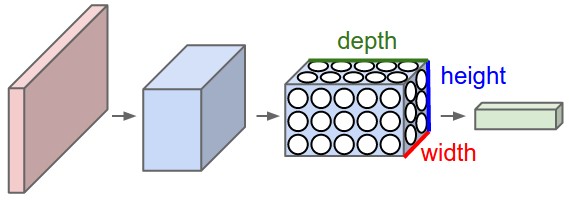Convolutional neural networks (CNN) are similar to the neural networks described in the previous sections. CNNs have weights, biases, and outputs through a nonlinear activation. Regular neural networks take inputs and the neurons fully connected to the next layers. Neurons within the same layer don’t share any connections. If we use regular neural networks for images, they will be very large in size due to a huge number of neurons, resulting in overfitting. We cannot use this for images, as images are large in size. Increase the model size as it requires a huge number of neurons. An image can be considered a volume with dimensions of height, width, and depth. Depth is the channel of an image, which is red, blue, and green. The neurons of a CNN are arranged in a volumetric fashion to take advantage of the volume. Each of the layers transforms the input volume to an output volume as shown in the following image:

Convolution neural network filters encode by transformation. The learned filters detect features or patterns in images. The deeper the layer, the more abstract the pattern is. Some analyses have shown that these layers have the ability to detect edges, corners, and patterns. The learnable parameters in CNN layers are less than the dense layer described in the previous section.


